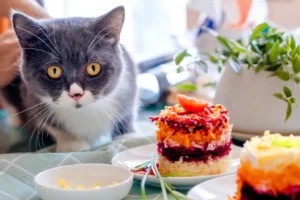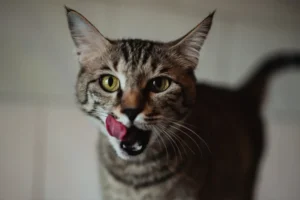These few sentences must be short and snappy, inviting, and direct.
Have you ever wondered why cat years are a thing? The concept can be puzzling, but fear not! We’re here to demystify the reasoning behind it.
The Origins of Cat Years
Have you ever wondered why cat years are a thing? Well, let’s dive into the fascinating history and cultural significance behind this popular way of calculating a cat’s age in relation to human years.
Believe it or not, the concept of cat years dates back centuries. In ancient times, cats were viewed as mystical creatures with a special connection to the spiritual realm. People believed that by calculating a cat’s age in human years, they could better understand the feline’s wisdom and longevity.
As societies evolved, so did the way we perceive our furry friends. In more modern times, the idea of cat years has become a practical way for pet owners and veterinarians to gauge a cat’s life stage and provide appropriate care.
So, the next time you hear someone mention cat years, remember that behind this seemingly simple concept lies a rich history of admiration and respect for our feline companions.
Understanding the Aging Process
Have you ever wondered why your cat seems to age differently than humans? Let’s uncover the science behind how cats age compared to us, shedding light on the unique differences in the aging process.
Cats age at a different rate than humans, with the first year of a cat’s life equaling about 15 human years. After that, each additional year for a cat is roughly equivalent to 4 human years. This accelerated aging process means that cats reach maturity quickly and then age more gradually as they get older.
One key factor in a cat’s aging process is their DNA. Cats have specific genetic markers that influence how they age, leading to changes in their behavior, physical appearance, and overall health over time. Understanding these genetic factors can help pet owners better care for their feline friends as they grow older.
So, the next time you notice your cat slowing down or developing gray hairs, remember that it’s all part of the natural aging process that makes cats such unique and cherished companions.
Common Misconceptions
Cats age differently than humans, which leads to the concept of “cat years.” However, there are some misconceptions surrounding this topic that need clarification. One common misunderstanding is that one human year is equivalent to seven cat years. This oversimplified approach doesn’t accurately reflect how cats age. In reality, the first year of a cat’s life is more equivalent to 15 human years, with each subsequent year adding about four “cat years.”
Another misconception is that all cats age at the same rate. Factors such as breed, genetics, diet, and environment play a significant role in how cats age. Some breeds are more prone to certain health issues that can affect their lifespan, while others may age more slowly or quickly depending on their individual circumstances.
It’s essential to understand that while using cat years as a guideline can be helpful in assessing your cat’s age relative to human years, it is not an exact science. Each cat is unique, and their aging process can vary based on various factors. By debunking these misconceptions, we can gain a better understanding of how cat years work and how to care for our feline friends appropriately.
Factors Influencing Cat Years
When it comes to understanding cat years, several factors influence how cats age compared to humans. Genetics play a significant role in determining a cat’s lifespan and overall health. Some breeds are known for their longevity, while others may have genetic predispositions to certain health issues that can impact their aging process.
Moreover, diet and nutrition have a direct impact on a cat’s lifespan and overall well-being. Providing a balanced diet with essential nutrients can help ensure your cat ages healthily and maintains their vitality. Additionally, regular veterinary check-ups, vaccinations, and preventive care can help detect any potential health issues early on, prolonging your cat’s lifespan.
Environmental factors such as lifestyle, exercise, and stress levels also play a crucial role in how cats age. Keeping your cat mentally stimulated, physically active, and ensuring they have a stress-free environment can contribute to their overall health and longevity.
By understanding the various factors that influence cat years, you can make informed decisions about your cat’s care and ensure they lead a happy and healthy life.
Extra Tip: Regular dental care is essential for cats as dental issues can impact their overall health and quality of life. Make sure to include dental check-ups in your cat’s routine veterinary care to maintain their oral health.
Cat Years in Practice
Veterinarians often use the concept of cat years to better understand the aging process of our feline friends. While it’s common knowledge that cats age faster than humans, the idea of cat years helps veterinarians tailor their care recommendations based on a cat’s age in human terms.
Understanding cat years is crucial for providing appropriate healthcare, as cats reach different life stages much sooner than humans. For instance, a one-year-old cat is roughly equivalent to a 15-year-old human in terms of physical and developmental maturity. By recognizing this accelerated aging process, veterinarians can recommend age-appropriate diets, exercise routines, and medical treatments to ensure our furry companions lead long and healthy lives.
So, next time you hear someone mention their cat’s age in human years, remember that it’s not just a cute conversion – it’s a valuable tool that helps veterinarians provide the best care for our beloved feline friends.
Fun Facts About Cat Ages
Did you know that the world’s oldest recorded cat, Creme Puff, lived to be a whopping 38 years old? That’s equivalent to over 150 human years! This impressive feline milestone showcases the longevity potential of our beloved pets.
Another interesting fact is that cats age most rapidly in their first two years of life, with significant changes occurring during this period. This rapid growth phase highlights the importance of proper nutrition and care during a cat’s early years to ensure they develop into healthy adults.
And here’s a fun tidbit: the concept of cat years originated from the idea that one cat year is roughly equivalent to seven human years. While this conversion isn’t entirely accurate due to variations in breed and size, it provides a simple way for us to understand and appreciate the aging process in our furry companions.
It’s fascinating to learn about the unique aging process of cats and how veterinarians use this knowledge to provide tailored care for each stage of their lives. Remember these fun facts next time you interact with your feline friend – they might just deepen your appreciation for the wonderful world of cat ages.
Alex, a passionate animal lover, has experience in training and understanding animal behavior. As a proud pet parent to two dogs and three cats, he founded AnimalReport.net to share insights from animal experts and expand his knowledge of the animal kingdom.









